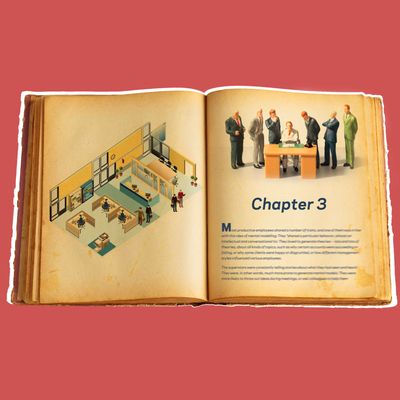
You know the type: those irritatingly poised people who manage to stay calm and together even in the busiest environments. And then there are the rest of us, who constantly feel overwhelmed and are easily thrown off by even the smallest of distractions. What makes someone stay focused in a chaotic environment — say, a talented nurse in a neonatal intensive care unit — while others fall to pieces at the arrival of an unexpected email?
Researchers, as it happens, have been studying these contrasting ways of being since at least the 1980s, and their findings suggest a simple yet profound answer: Those who keep it together under pressure are storytellers, essentially. They narrate their own lives to themselves — things that have just happened, things that are about to happen. They daydream about the day ahead and review the hours that have already passed. In doing this, scientists argue, they learn how to best direct their attention and are “better at choosing where to focus and what to ignore,” writes Charles Duhigg, who covers this area of the scientific literature in his new book, Smarter Faster Better: The Secrets of Being Productive in Life and Business.
Psychologists have a term for this. (Psychologists have a term for everything.) It’s called “mental modeling,” and in the 1980s, a group of psychologists found evidence of it when they interviewed people who worked in extreme chaos: firefighters, military leaders, emergency rescue staff. Perhaps the most fascinating figure to emerge in this section of Duhigg’s book is a NICU nurse named Darlene, whose attention is pulled this way and that by the very nature of her job. “Seemingly okay preemies can become unwell quickly; sick infants can recover unexpectedly,” Duhigg writes. “So nurses are constantly making choices about where to focus their attention: the squalling baby or the quiet one? The new lab results or the worried parents who say something seems wrong?”
One day, Darlene becomes convinced that something is seriously wrong with one of the babies in her care. Another nurse disagrees; the baby looks fine. But the doctor allowed Darlene to follow her hunch, and it’s a lucky thing she did; the baby turned out to be in the beginning stages of sepsis, a potentially fatal inflammation caused by infection. Later, Beth Crandall — one of the psychologists studying the NICU nurses — interviewed Darlene to ask what tipped her off. Duhigg recounts the conversation:
Darlene explained that she carried around a picture in her mind of what a healthy baby ought to look like – and the infant in the crib, when she glanced at her, hadn’t matched that image. So the spotlight inside Darlene’s head went to the child’s skin, the blot of blood on her heel, and the distended belly. It focused on these unexpected details and triggered Darlene’s sense of alarm. The other nurse, in contrast, didn’t have a strong picture in her head of what she expected to see, and so her spotlight focused on the most obvious details: The baby was eating. Her heartbeat was strong. She wasn’t crying. The other nurse was distracted by the information that was easiest to grasp.
In another research project on mental modeling, a group of scientists at MIT studied the most productive people at a midsize recruiting firm. They were doing jobs that were very different, to say the least, from Darlene’s, and yet they operated in a similar way — they constantly told themselves stories about their days. “A lot of these people will come up with explanation after explanation about what they just saw,” Marshall Van Alstyne, one of the researchers, told Duhigg. “They’ll reconstruct a conversation right in front of you, analyzing it piece by piece. … They’re constantly trying to figure out how information fits together.”
To do this at work, Duhigg suggests spending your commute imagining your day, envisioning with as much specificity as you can what you expect to happen, step by step. This way, so the theory goes, when something goes awry, you’ll spot it quickly, and you can compare it to the script you already worked out in your head. (Is this worth paying attention to — or not?) That script helps you figure out how everyday interruptions fit into the big picture — which, in turn, helps you figure out what deserves your attention and what can be ignored. “Narrate your life as you are living it, and you’ll encode those experiences deeper in your brain,” Duhigg writes. “If you need to improve your focus and learn to avoid distractions, take a moment to visualize, with as much detail as possible, what you are about to do. It is easier to know what’s ahead when there’s a well-rounded script in your head.”

